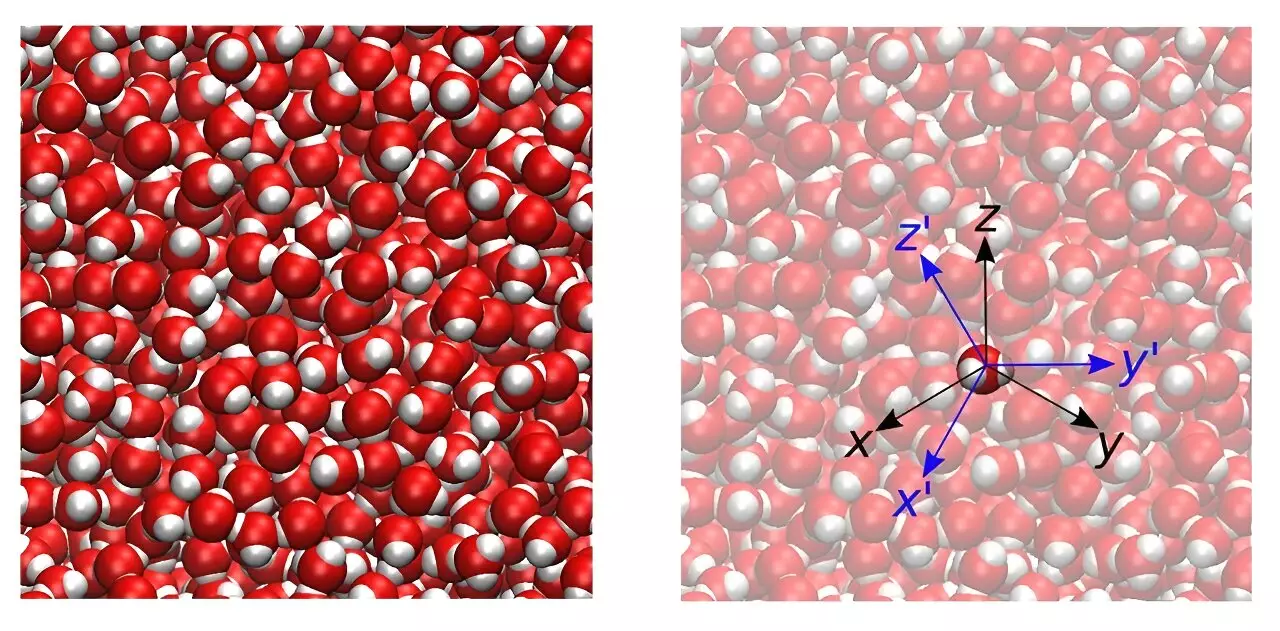The field of computational science constantly evolves, challenging previously accepted norms and pushing the boundaries of knowledge. A recent study conducted by computational scientists at the Department of Energy’s Oak Ridge National Laboratory questions a fundamental aspect of molecular dynamics simulations: the time step used to simulate the dynamics of water molecules. This critical reevaluation has the potential to impact the accuracy and reliability of simulations in various scientific domains.
Traditionally, a 2-femtosecond time step has been widely accepted as standard practice in water simulations for almost half a century. However, the recent study suggests that using a time step greater than 0.5 femtoseconds could introduce errors in both dynamics and thermodynamics in rigid-body water descriptions. Water, being a crucial component in biomolecular simulations, necessitates precise and accurate modeling to provide meaningful insights into biological systems.
The implications of this study reverberate across the scientific community, particularly in the realm of molecular dynamics simulations. By highlighting the discrepancies that can arise from using longer time steps, the researchers shed light on the importance of maintaining equilibrium and accuracy in computational models. Understanding the translational and rotational temperatures of water molecules is paramount in achieving reliable simulations that reflect real-world behaviors.
Historical Perspectives and Contemporary Challenges
The study traces its roots back to a seminal paper published in 1977, which introduced the concept of decoupling vibrations from translation and rotation to enable the use of longer time steps in simulations. While this approach aimed to optimize computational resources, it inadvertently led to inaccuracies in thermodynamic properties and dynamic behaviors. The recent findings underscore the need to revisit foundational works and reevaluate the methodologies employed in molecular dynamics simulations.
One of the core tenets of statistical mechanics is that a system in equilibrium should exhibit consistent temperatures in its translational and rotational motions. Deviations from this principle indicate inaccuracies in the simulation methodology. By challenging the notion of rigid-body descriptions and advocating for a 0.5-femtosecond time step, the researchers advocate for a return to fundamental principles to enhance the fidelity of molecular simulations.
Adapting to Advancements in Computing
With advancements in computing power and technology, the transition to a 0.5-femtosecond time step is more feasible than ever. While this adjustment may require longer computing times, it offers a promising avenue for improving the accuracy and reliability of molecular dynamics simulations. The ease with which computational scientists can make this shift underscores the significance of embracing innovation and revisiting established practices in scientific research.
The critical reevaluation of time steps in molecular dynamics simulations underscores the dynamic nature of computational science. By challenging long-accepted standards and advocating for improved accuracy, the researchers at Oak Ridge National Laboratory pave the way for enhanced understanding and modeling of complex biological systems. As scientific communities absorb and assimilate these findings, the future of molecular dynamics simulations appears poised for advancement and refinement.



Leave a Reply